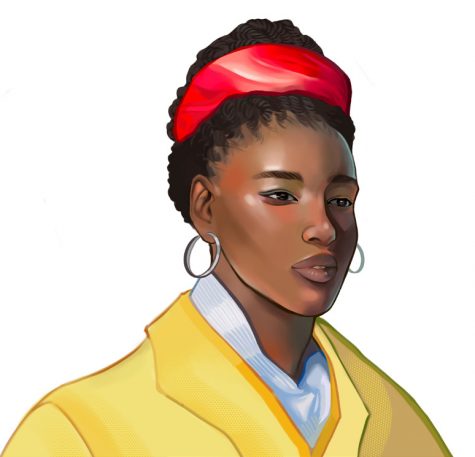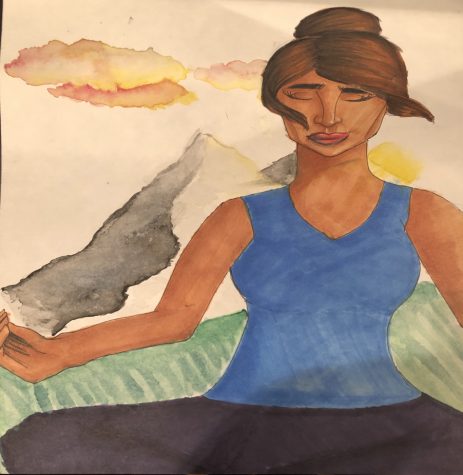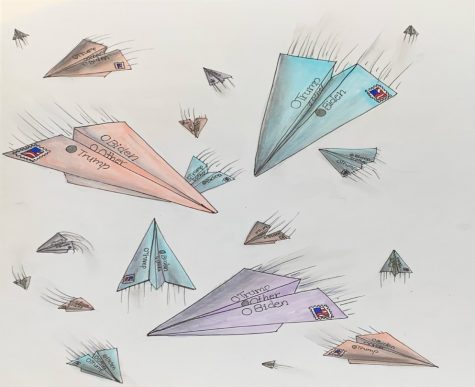JBS Takes on China
May 9, 2018
This spring break, twelve students along with their two faculty sponsors, traveled 7,204 miles from St. Louis to Beijing for an eleven-day journey in China. This trip was Burroughs’ first to China, led by Chinese teacher Fushun Le and Music Department Chair Jerry Estes. From Beijing to Luoyang, to Xi’an, the group visited historic sites including the Forbidden City, the Great Wall, ancient Buddhist temples, and the Terracotta Army.
The journey started with a 13-hour flight to Beijing. Despite extreme jet lag from the time difference, the students woke up bright and early the next day to explore Beijing and learned to build their own air filters. China’s harmful air pollution and smog have become notorious for their detrimental effects on health, and when asked about the smog in China, Samantha Bernstein ‘19 recounts, “for a couple of days, we were required to wear masks by the [company contracted by Burroughs] because the air quality index was too high.”
The next day the group visited the Forbidden City, a former imperial palace, and Tiananmen Square, the infamous site of the protests and massacre in 1989. Aidan Taylor ‘19 says, “it’s one thing to see [the historic sites] in pictures, but to see it in real life brings a whole new life to it.” The following day, the students went to the Dandelion School, a middle school for children of migrant workers in Beijing.
At Dandelion School, Burroughs students planned out lessons on American dance and sports, among other topics, to share with the students of the Dandelion School. Bernstein reminisces, “I did a session on relaxation, so we did coloring. We were trying to draw parallels between American and Chinese culture…. I cried when we had to leave [Dandelion School]—it was that powerful.” Ben Kazdan ‘20 agrees, calling it his favorite part and declaring, “it was fulfilling to bring these kids happiness and make them laugh.”
During their two days at the Dandelion School, Burroughs students also visited the homes of students who attended the school. To Kazdan, “It’s quite eye-opening to see [the students’] rooms—fourteen people with bunk beds in a room the size of my room.”
After leaving the school, the group from Burroughs hiked the Great Wall, which Taylor describes as “hands down, the most beautiful view I’ve ever seen in my life.” Kazdan agrees, calling it “breathtaking, especially since it’s been on my bucket list.” He observes, however, that there were a number of fast food chain restaurants around the Great Wall, clashing with the World Heritage Site.
To reach their next destination the group from Burroughs took a high-speed rail train that traveled at around 190 miles per hour. Once in Luoyang, the students visited the White Horse Temple and the Longmen Grottoes, both ancient Buddhist temples, as well as Guanlin Temple, the tomb of the famous general Guanlin.
Bernstein reports that the temples were her favorite part of the trip, although she herself is not religious. She explains, “I just thought that it was really cool that people prayed there, regardless of religion, as a sign of respect.”
The next morning, the students caught an early train to Xi’an. Once there, they viewed the Terracotta Ar
my, a collection of around 9,000 clay soldiers, horses, and chariots that were buried with Emperor Qin Shi Huang around 200 BCE.
Finally, the Burroughs students and faculty ended their trip with a long bike ride on top of the Xi’an City Wall, before heading back to Beijing.
Looking back on the trip, Le believes that “the students demonstrated their successful teamwork, appreciation and gratitude, and critical thinking skills. They stepped out of their comfort zone to learn and use the Chinese language.”
Estes, who is not a Chinese speaker, was struck by the “older people I encountered—their sense of style and friendliness.” He observes that “our students learned that the power of the human connection transcends barriers of language, race, and socioeconomic differences.”
The students toured various historical sites but also interacted with the local people they encountered. “When I was on the bus, I talked to one of the locals,” Carolyn Herbosa ‘19 remembers. Kazdan, on the other hand, recalls that many of the local people “had never seen Americans before, and walked up to us and wanted to take photos with us or of us.” He shrugs a little, adding, “[It] was an interesting experience.”
Taylor found that “for the most part [the food] was really good, and I felt that I could eat a lot of different things even though I’m vegan.” Throughout the trip, the students were able to explore a few “snack streets,” small streets lined with shops and stands that sell a variety of street food. Taylor notes, however, that their time in China was very “education driven,” which “sometimes got in the way of exploring the cities because we had to make time for our ‘group discussions,’ ‘debriefs,’ and mandatory journal.’”
Kazdan ‘20 found that communication with people who did not speak English was a challenge, but states, “I realized that if you tried hard enough, you can eliminate a language barrier.” He continues on to explain that they played sports with the kids at the Dandelion School and language no longer mattered.
Will there be another trip to China? In an email, Ms. Le writes, “some students would love to go or go again, and I plan on organizing one soon, but it depends on need.”







